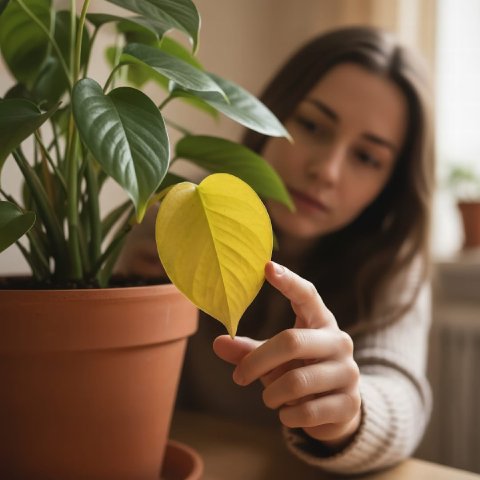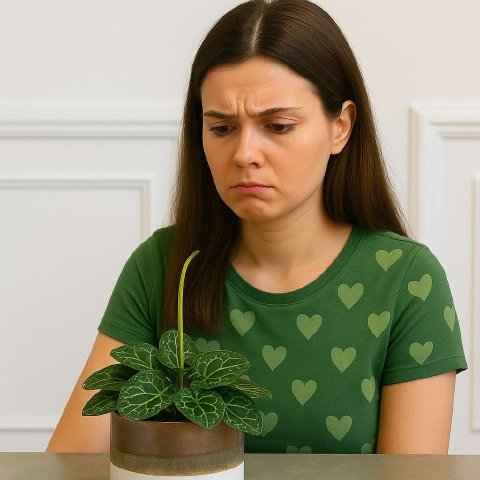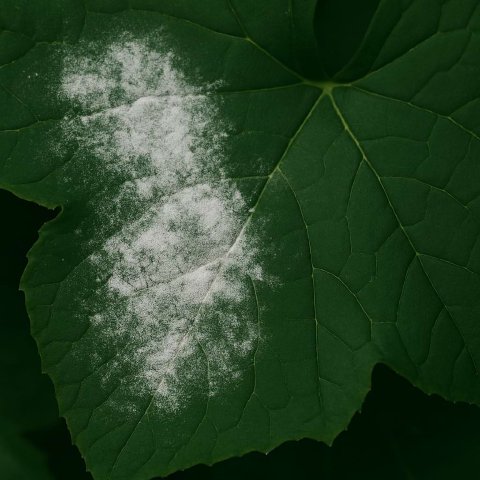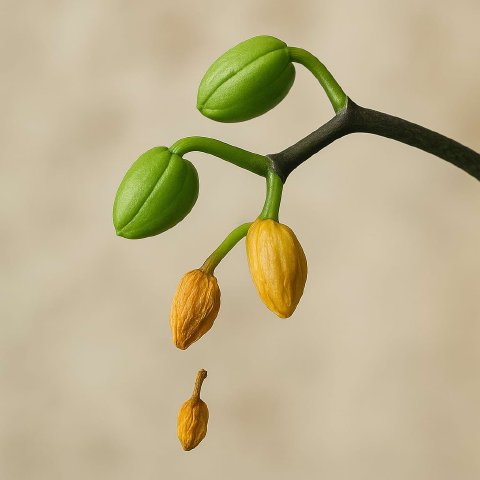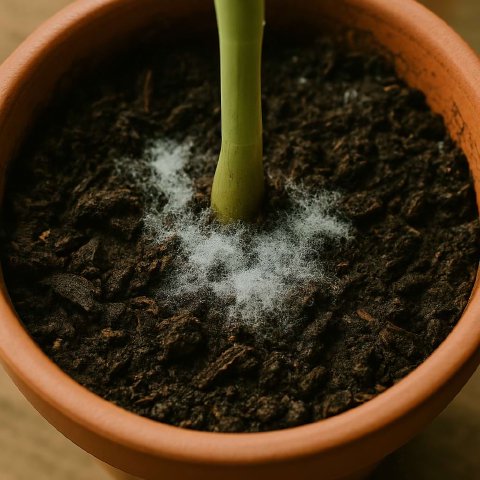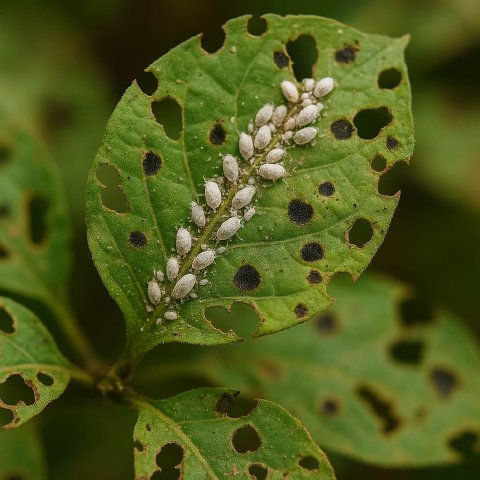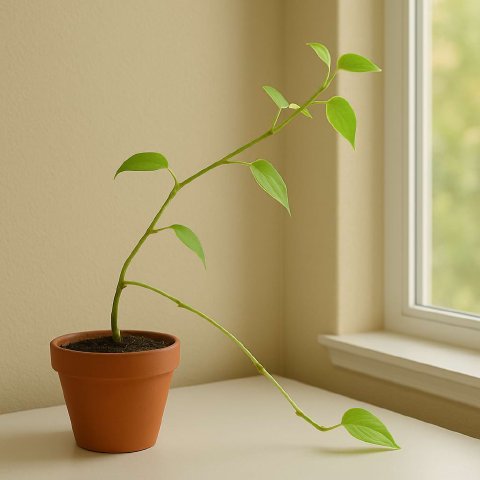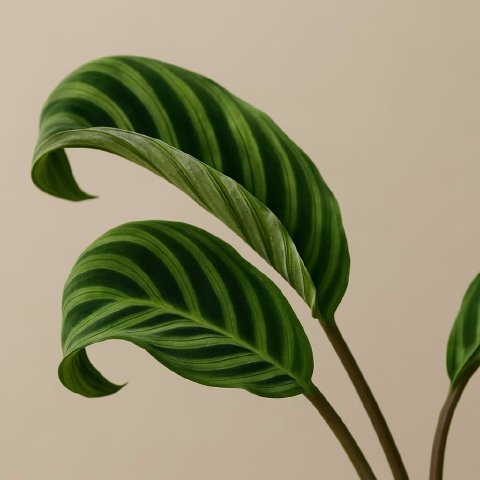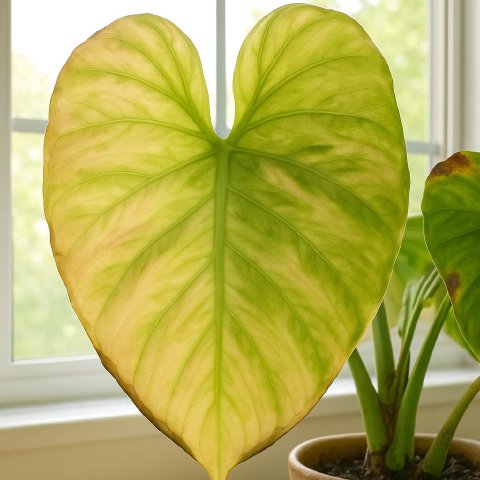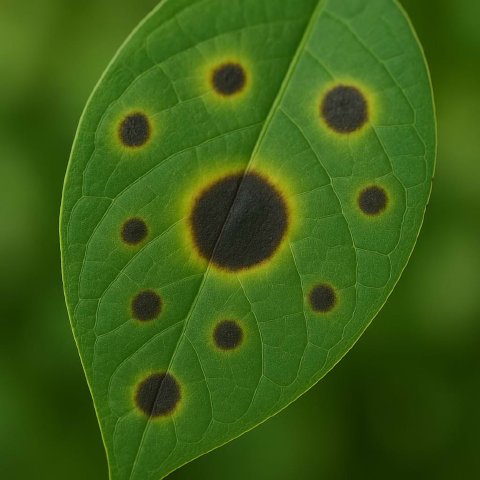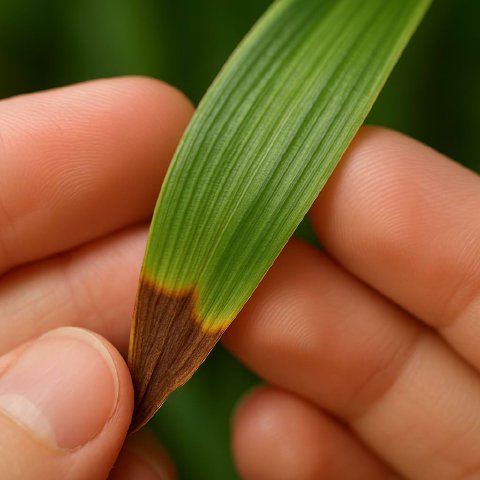🪴 In This Guide 🪴
🎯 Wilting Leaves? Let's Diagnose the Problem
Quick Diagnostic Chart
Hello, plant friends! Anastasia here. There’s nothing more alarming than seeing your once-perky plant suddenly drooping and sad. Wilting is your plant’s most dramatic cry for help, and it almost always points to an issue with water.
But here’s the tricky part: both too little and too much water can cause wilting. The key is to check the soil. Use this chart to quickly identify the likely culprit.
| If you see… | And the soil is… | It’s likely… |
|---|---|---|
| Limp, drooping leaves; plant looks thirsty | Bone Dry / Hard | Underwatering (The Obvious Cause) |
| Limp, drooping leaves; lower leaves are yellow & soft | Soggy / Wet | Overwatering (The #1 Deceptive Cause!) |
| Wilting shortly after being moved to a new pot | N/A | Transplant Shock |
| Sudden wilting on a very hot day or near a draft | N/A | Temperature or Environmental Stress |
| Wilting that doesn’t improve, plus other symptoms | Any | Pests or Disease |
🤔 Why Do Plants Wilt?
The Science of Turgor Pressure
Think of plant cells like tiny water balloons. When they are full of water, they are firm and rigid, holding the leaves and stems upright. This internal water pressure is called “turgor pressure.”
Wilting happens when the cells lose water and the turgor pressure drops. The “balloons” deflate, and the plant’s structure can no longer support itself, causing it to droop. This happens when the roots can’t supply water to the leaves as fast as the leaves are losing it to the air. Our job is to figure out what’s disrupting that supply line.
🌿 Top 5 Causes of Wilting or Drooping Leaves and How to Fix Them
Cause #1: Underwatering
This is the most straightforward cause of wilting.
- Why it happens: The soil has run out of water. There is simply nothing left for the roots to absorb and send to the leaves. The plant is dehydrated.
- How to check: The soil will be bone dry all the way through. The pot will feel noticeably light. The leaves may look limp and lifeless, and the lower ones might be starting to get crispy.
- The Fix: Water your plant immediately and thoroughly. For very dry, compacted soil, bottom watering is the best method. Place the pot in a tray of water for an hour to let it soak up moisture from the bottom. The plant should perk up within a few hours.
Cause #2: Overwatering & Root Rot
This is the most dangerous and deceptive cause of wilting.
- Why it happens: When soil is constantly waterlogged, roots suffocate and begin to rot. These dead and dying roots are physically unable to absorb water. So, even though the soil is wet, the roots can’t do their job, and the plant wilts from thirst. It’s a cruel irony.
- How to check: The soil is soggy or wet to the touch, and the pot feels heavy. You may also see soft, yellowing lower leaves and smell a musty, swampy odor. The wilting doesn’t improve after “watering.”
- The Fix: This is an emergency. Stop watering. Unpot the plant and inspect the roots. If they are black, brown, and mushy (instead of firm and white), you have root rot. Use sterile scissors to trim away all the dead roots. Repot into fresh, well-draining soil and a pot with good drainage. Water lightly and wait for signs of recovery.
Cause #3: Transplant Shock
Plants don’t like moving house.
- Why it happens: Repotting inevitably damages some of the fine root hairs that are crucial for water absorption. For a few days to a week after repotting, the plant’s root system is in recovery mode and can’t keep up with the leaves’ water demands, causing wilting.
- How to check: The wilting occurred within a day or two of you repotting the plant.
- The Fix: Be patient. This is usually temporary. Keep the plant out of direct sunlight and avoid fertilizing while it recovers. Keep the soil lightly and evenly moist, but not soggy. It should perk back up once its roots get re-established.
Cause #4: Temperature & Environmental Stress
A sudden change in environment can shock a plant.
- Why it happens:
- Extreme Heat: On a very hot day or in a hot car, a plant loses water through its leaves (transpiration) much faster than its roots can absorb it, causing it to wilt dramatically.
- Cold Draft: A blast of cold air from a window or AC unit can shock the plant and cause a sudden droop.
- How to check: Is the plant in a hot, sunny window, next to a radiator, or in the path of a draft?
- The Fix: Move the plant to a more stable location immediately. If it’s wilted from heat, move it to a shady spot and water it. It should recover once its temperature stabilizes.
Cause #5: Pests or Disease
An underlying health issue can cause chronic wilting.
- Why it happens: A severe infestation of root mealybugs can damage the roots, impairing water uptake. Likewise, fungal or bacterial diseases that attack the stem at the soil line (stem rot) can sever the plant’s vascular system, cutting off water flow to the rest of the plant.
- How to check: The wilting persists even with proper watering. Unpot the plant and look for signs of pests on the roots. Check the stem at the soil line for any soft, mushy, or discolored sections.
- The Fix: Treat the specific issue. For root mealybugs, you’ll need to wash the roots and repot in fresh soil. For stem rot, the prognosis is often poor, but you may be able to save the plant by taking healthy cuttings to propagate.
🛡️ How to Prevent Wilting in the Future
Best Practices for Perky Plants
- Perfect Your Watering Technique: This is #1. Ditch the rigid schedule. Always check the soil moisture with your finger before watering. When you do water, do it thoroughly.
- Drainage is Non-Negotiable: Use pots with drainage holes and a well-draining soil mix to prevent waterlogging and root rot.
- Provide a Stable Environment: Keep plants away from heat vents, radiators, and drafty windows or doors.
- Acclimate New Plants: When you bring a new plant home or repot it, give it time to adjust in a spot with moderate light and temperatures.

